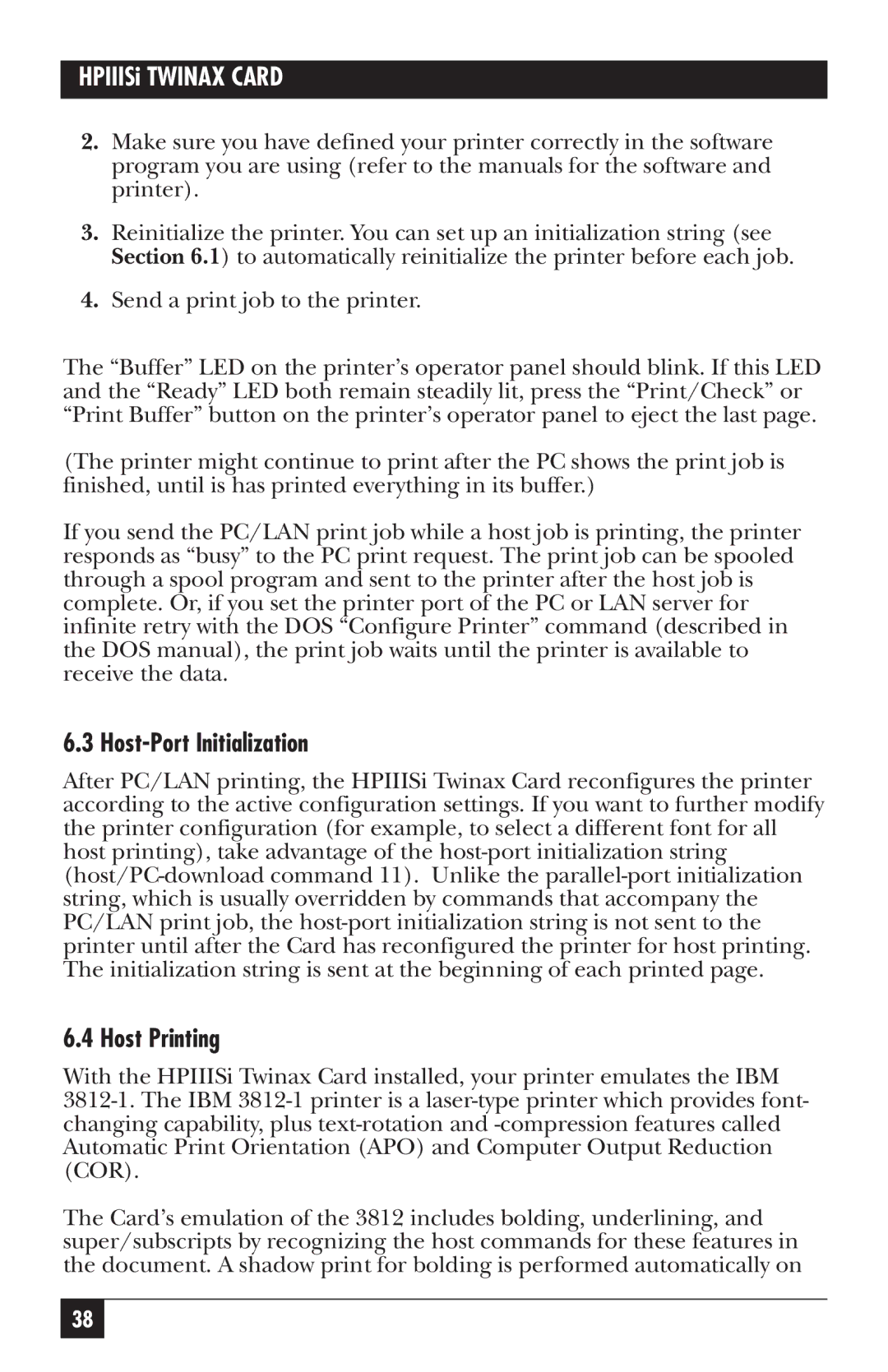
HPIIISi TWINAX CARD
2.Make sure you have defined your printer correctly in the software program you are using (refer to the manuals for the software and printer).
3.Reinitialize the printer. You can set up an initialization string (see Section 6.1) to automatically reinitialize the printer before each job.
4.Send a print job to the printer.
The “Buffer” LED on the printer’s operator panel should blink. If this LED and the “Ready” LED both remain steadily lit, press the “Print/Check” or “Print Buffer” button on the printer’s operator panel to eject the last page.
(The printer might continue to print after the PC shows the print job is finished, until is has printed everything in its buffer.)
If you send the PC/LAN print job while a host job is printing, the printer responds as “busy” to the PC print request. The print job can be spooled through a spool program and sent to the printer after the host job is complete. Or, if you set the printer port of the PC or LAN server for infinite retry with the DOS “Configure Printer” command (described in the DOS manual), the print job waits until the printer is available to receive the data.
6.3 Host-Port Initialization
After PC/LAN printing, the HPIIISi Twinax Card reconfigures the printer according to the active configuration settings. If you want to further modify the printer configuration (for example, to select a different font for all host printing), take advantage of the
6.4 Host Printing
With the HPIIISi Twinax Card installed, your printer emulates the IBM
The Card’s emulation of the 3812 includes bolding, underlining, and super/subscripts by recognizing the host commands for these features in the document. A shadow print for bolding is performed automatically on
38
